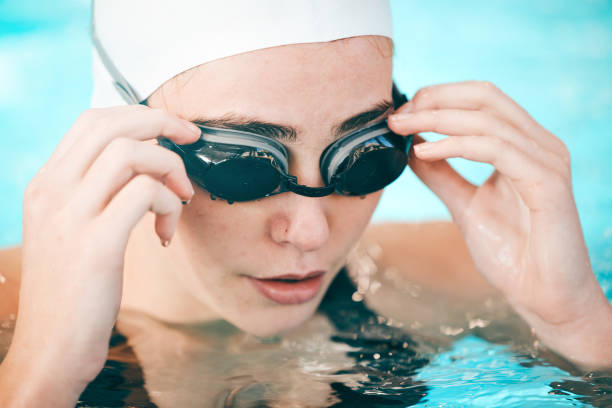Looking for fitness-related solutions online is always a bit risky. Many websites offer support but encourage users to read their unresearched content to promote unrelated products. It’s an unnecessary waste of time, but even more critical, doing the wrong exercises could cause injury to yourself. This is particularly applicable to dryland exercises for swimmers. Dryland training, like lifting weights, can hinder your swim performance.
This article will provide dryland exercises that could be suggested but should not be done at any cost by swimmers. We won’t let you down, however. We’ll give you alternatives to dryland exercises for swimmers that still concentrate on the muscle groups that you’d like to strengthen.
Dryland Workouts for Swimmers: Staying Injury-Free
When swimming, it is vitally important to concentrate specifically on technique or speed in your race. This is also true beyond the water, where your workouts must be precisely planned to attain an appropriate level of performance or increase the strength of your muscles to perform a specific stroke.
However, some coaches, especially those with no experience in swimming, suggest swimmers consider dryland training for swimmers, which can result in damage that is not good. This article will provide exercises offered but should always be avoided by swimmers. Instead, please take a look at the activities we offer.
AVOID BENCH DIPS
The first thing to stay clear of is bench dips. They are a part of the strength training method of exercising. Like pushups, you’re lifting only the weight of your body. It is a joint exercise in the majority of fitness classes. However, it’s not a safe exercise for swimmers.
The beginning position is your arms spread behind your back, resting on a bench while keeping your glutes elevated off the floor with your legs extended. The workout is completed by bending the arms, starting with your shoulders and then your triceps until your glutes almost touch the base.
The problem with this workout is that your rotator cuff is stretched too much in the downward movement, which can cause injuries, especially if this exercise is not done correctly.
Recommended Alternative: Tricep Kickbacks With a Resistance Band
What’s the ideal exercise for strengthening your triceps for the four swimming strokes? Tricep kickbacks using the help of a band.
Set a resistance band under the feet of one and then grasp it with your other hand. Then, bend forward from the lower waist until the upper part of your body is vertical to the floor, and bend your knees slightly. Start with one hand perpendicular to the floor and with the band tightly in place, then extend your arm forward until it is at shoulder height. Once you’ve completed the exercise and then returned to the starting position. Do the arms exercise on both sides of your body.
This workout is specifically designed to build your triceps muscles and can help develop the coalface of your swimming stroke.
AVOID LEG RAISES LYING ON THE FLOOR
The other exercise is leg raises performed lying on the ground (also called Leg lifts). This is a prevalent strength-building exercise that is performed at the gym. However, it is a risky exercise that can result in injuries. As with situps, if you do them wrongly, it can cause damage to the lower back and abs.
Recommended Alternatives: Planks or Flutter Kicks
You will get higher-quality and better-targeted results from performing planks. While resting your elbows on your toes, with your legs parallel to the ground, ensure that your head points forward. You can also do the lateral planks, twisting your body until your shoulders parallel the floor. You can also balance on your elbow and the side of the foot. To maximize the benefits of this exercise, you should use an eyeglass or a spotter to ensure your body is straight.
This exercise will help you learn how to work the ab muscles, which is crucial for proper posture while swimming all four strokes or diving into.
If you’re not doing leg raises, you can find an exercise similar to the one you are doing that is less strained on your lower back. Flutter kicks provide an intense ab workout without rest between sets. Lie back on your back, raise your feet 6 inches above the ground, and Flutter your feet up and down in opposite directions to build a stronger core.
AVOID DEADLIFTS
The last exercise to be avoided is deadlifts. The benches, presses, and squats, deadlifts are among the three lifting exercises within the powerlifting world. Deadlifts are a powerful full-body exercise, one of the essential elements to gaining severe strength.
However, they are especially harmful when done with heavy weights. It is recommended to avoid them because when they are not done correctly from an early age, they can cause serious injury in your gluteus maxus and the hamstrings.
Recommended Alternatives: Lunges or Burpees
Lunges are a better option. When standing, step forward and extend your leg until it aligns with the floor. Make sure that your back knee isn’t touching the floor. When you’ve completed the exercise bend your leg, straighten it and then return to the standing position. If you want to increase the intensity, use a dumbbell while exercising.
Another option is to perform burpees. Burpees can provide you with a whole-body workout without equipment or space. You are less at risk of injury as you only lift your body weight, not bars covered with plates.
Burpees can make your muscles grow, and your endurance will increase. Be aware of your breathing during the exercise and slowly increase the repetitions. If you can do hundreds of burpees per day, you’ll observe that your stroke speed will be higher in your swimming training.
These exercises will work all the major muscles of your lower body. They can help enhance the leg’s kick, dive, and tumble turns.




